Painted lady butterfly influx needs people to count them
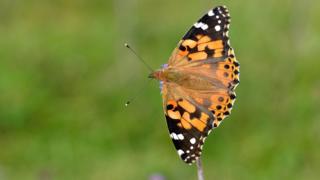
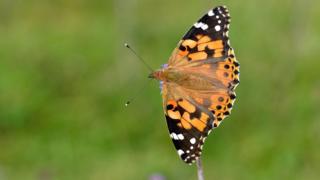 Image copyright Butterfly Conservation/PA
Image copyright Butterfly Conservation/PA A potential mass influx of butterflies to the UK has led to calls for volunteers to help count them.
The painted lady butterfly commonly flies to the UK during the summer months, but every 10 years millions arrive in a mass migration.
Butterfly Conservation said unusually high numbers of painted ladies had been spotted flying from Europe to the UK.
The charity urged people to take part in an annual count to see if this year marks a “painted lady summer”.
About 11 million painted ladies arrived in the UK the last time the phenomenon happened in 2008.
Naturalist and TV presenter Chris Packham, who is vice president of Butterfly Conservation, described the mass migration as “one of the wonders of the natural world”.
He said the butterfly flies at speeds of up to 30mph on its “extraordinary” 7,500-mile (12,070km) annual journey from Africa to the Arctic Circle and back.
Mr Packham said the high number of reported sightings of the painted lady across Europe over the spring and early summer meant it was “promising” that 2019 “could be a very good year” for the species.
The Big Butterfly Count begins on Friday and runs until 11 August.
To take part in the world’s biggest butterfly count people must spend 15 minutes in a sunny spot anywhere in the UK, counting the butterflies they see before submitting sightings online or via the app.
Participants are encouraged to spot and record 17 species of common butterfly and two day-flying moths.

Britain’s most common butterflies and how to spot them
Speckled wood: Look for dark brown wings with cream spots. The butterfly has spread in recent years – an extraordinary “success story” in response to climate change, says Butterfly Conversation – and can be found in East Anglia, the Midlands, much of northern England and some parts of Scotland.
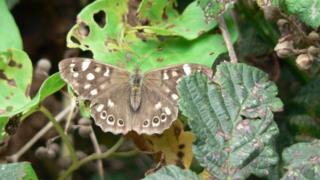
Comma: The comma used to only breed in southern Britain but is now found as far north as central Scotland, with some even crossing the sea to colonise Ireland, says the Woodland Trust. Its wings are orange and brown with deep scallops, giving “an almost ragged appearance”.
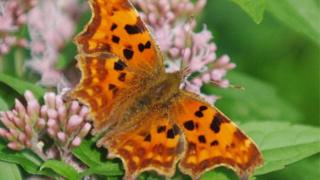 Image copyright PA Media
Image copyright PA Media Common blue: This is the most widespread blue butterfly in Britain, according to Butterfly Conservation. The males are blue, while the colour of the females varies from nearly completely brown to predominantly blue.
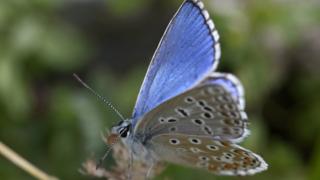 Image copyright Getty Images
Image copyright Getty Images Holly blue: This is different from the Common Blue as it does not have orange dots on the underside of its wings. It is widespread in the south of the UK but spreading northwards.
 Image copyright Getty Images
Image copyright Getty Images Brimstone butterfly: Yellow wings for the males – which is how it is suggested the “butterfly” could have got its name – and pale green for the females. It’s spread in recent years, mainly in northern England, Butterfly Conservation says.
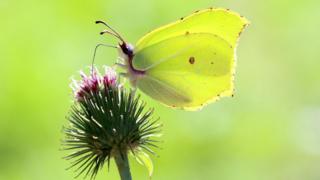 Image copyright Mark Searle/Butterfly Conservation
Image copyright Mark Searle/Butterfly Conservation Peacock: The peacock – found throughout the UK – is distinguished by its eye-spot patterns, which is uses to scare off predators by flicking open its wings.
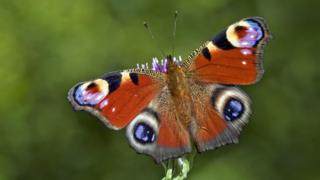 Image copyright PA Media
Image copyright PA Media Red admiral: Found anywhere in Britain and in all habitats, these have dark brown wings with a band of orange or red. After hibernating, each spring they migrate northwards, with many crossing the sea to the UK from Europe.

Large white: Look out for white wings and black tips and, for females, two spots on the upper side of each wing. It is common throughout Britain although many gardeners consider them pests as the caterpillars severely damage Brassica crops, says the RSPB.
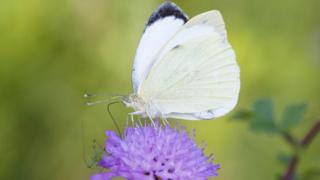 Image copyright Getty Images
Image copyright Getty Images Small white: Similar to the large white but obviously smaller, this has brilliant white wings with one or two wing spots. It is found in a range of habitats including gardens and particularly allotments where cabbages are growing, says Butterfly Conservation.
 Image copyright Ann Collier/Butterfly Conservation
Image copyright Ann Collier/Butterfly Conservation Small tortoiseshell: These are widespread and found throughout Britain. It’s bright orange and black with blue markings around the edges of the wing.
 Image copyright Science Photo Library
Image copyright Science Photo Library Meadow brown: This is the most abundant species in many habitats, with hundreds together at some areas. It is brown with an orange patch on each wing around a black eye spot.
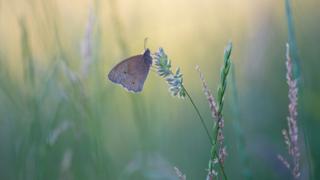 Image copyright Jaco Costerus/Butterfly Conservation
Image copyright Jaco Costerus/Butterfly Conservation Gatekeeper: This is often seen alongside the meadow brown (above), but is more orange with a brown edge around the wings.
 Image copyright Mark Searle/Butterfly Conservation
Image copyright Mark Searle/Butterfly Conservation Ringlet: Another brown butterfly, the ringlet’s appearance has been described as “velvety” and is almost black with rings on its wings. It has spread across England and Scotland in recent years.
 Image copyright Tim Melling/Butterfly Conservation
Image copyright Tim Melling/Butterfly Conservation All pictures subject to copyright.


